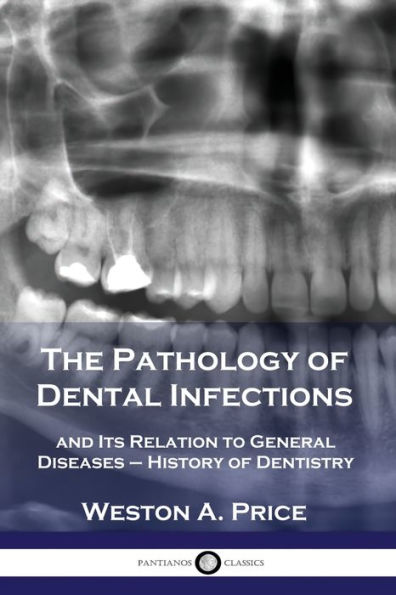Home
The Pathology of Dental Infections: and Its Relation to General Diseases - History Dentistry
Barnes and Noble
The Pathology of Dental Infections: and Its Relation to General Diseases - History Dentistry
Current price: $21.98


Barnes and Noble
The Pathology of Dental Infections: and Its Relation to General Diseases - History Dentistry
Current price: $21.98
Size: Hardcover
Loading Inventory...
*Product information may vary - to confirm product availability, pricing, shipping and return information please contact Barnes and Noble
These transcriptions of dental meetings and seminars of the early 20
th
century shed light on the history and development of dentistry.
The dentists of the time hadn't standardized their prescribing practices, with private practices around the USA and Canada often giving their patients different medicines for pain, inflammation and infections. Some dentists at the turn of the 20
century lacked detailed knowledge of what they had prescribed, having simply been recommended by other dentists, or been advertised to by a drug company. The Canadian Oral Prophylactic Association was conceived as a way to inform and improve the situation; within months of founding, they had created their own toothpaste and were publishing guidelines.
These lectures sought to educate and inform dentists about the latest advances in the field. The abysmal death rates involved in dental infections remained an enormous problem; public education in dental care, oral hygiene and better treatments were still areas in dire need of improvement when these lectures were published in 1916. However, the recent technological advances in X-rays were encouraging; with the use of radiology, diagnosis of cavities and tooth decay became easier. The case studies related provide valuable historic context on dentistry at the time.
th
century shed light on the history and development of dentistry.
The dentists of the time hadn't standardized their prescribing practices, with private practices around the USA and Canada often giving their patients different medicines for pain, inflammation and infections. Some dentists at the turn of the 20
century lacked detailed knowledge of what they had prescribed, having simply been recommended by other dentists, or been advertised to by a drug company. The Canadian Oral Prophylactic Association was conceived as a way to inform and improve the situation; within months of founding, they had created their own toothpaste and were publishing guidelines.
These lectures sought to educate and inform dentists about the latest advances in the field. The abysmal death rates involved in dental infections remained an enormous problem; public education in dental care, oral hygiene and better treatments were still areas in dire need of improvement when these lectures were published in 1916. However, the recent technological advances in X-rays were encouraging; with the use of radiology, diagnosis of cavities and tooth decay became easier. The case studies related provide valuable historic context on dentistry at the time.

















